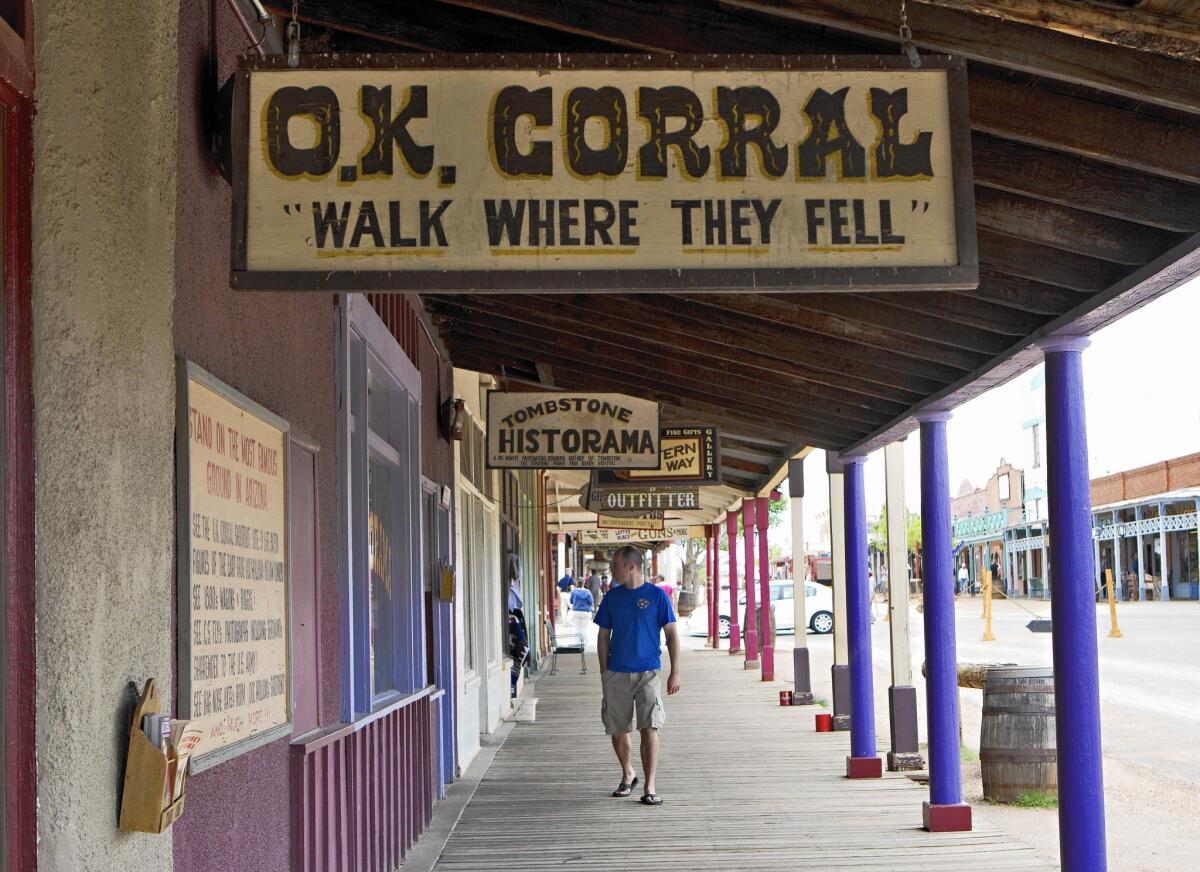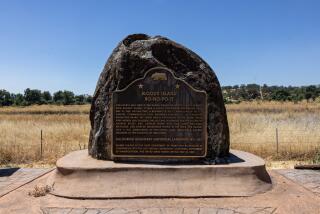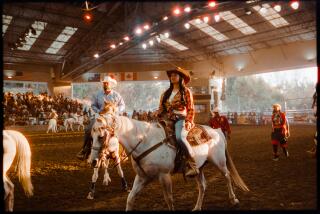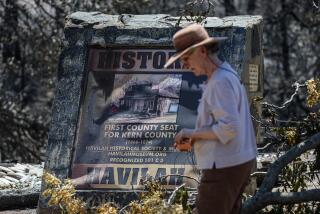Wild West place names come with wild tales in Arizona

The legend goes like this: A cattle gang moved in and terrorized Holbrook, a town that, as an old saying goes, was “too tough for women and churches.” That was about 1886.
There were daily fistfights and decades-long feuds, and sometimes the violence escalated. One day, a brawl at the Cottage Saloon ended in a shootout that left the floor so slick, it was as if it had been splashed with a bucket of blood.
And now, the name graces a street sign: Bucket of Blood Street.
The reality is probably less exciting.
“You’ll see [accounts] that say 26 men died with their boots on in 1886 alone, but there’s no provenance of that,” Arizona State Historian Marshall Trimble said. “The population was only 250 at the time. If that was true, it would be one of the most famous stories in the West.”
Like much of the Old West, Arizona has names that reflect its violent history and some that try to make a buck off it. In Holbrook, community development director Kathleen Smith said the name of the street would stick, and you’ll find it in a forgotten part of town bypassed when Interstate 40 replaced this stretch of Route 66.
“It’s a place with a tough history,” Smith said. “We wouldn’t change it. What would be the fun in that?”
Arizona isn’t the only Western state with eccentrically named locales. Just think Purgatory, Colo., Truth or Consequences, N.M., and the unbeatable Possum Kingdom, Texas. But Arizona, for whatever reason, seems to have a good share of blood-soaked place names.
At Bloody Tanks Wash, near modern-day Miami, Ariz., white settlers and Maricopa Indians hosted rival Apaches in the winter of 1863-64 and allegedly put strychnine in their corn, then slaughtered them.
Skeleton Canyon also manages to live up to its name. It’s where a man named Curly Bill and a band of men attacked 14 or 15 Mexican smugglers. Later, “some of the skulls picked up by cowboys became soap basins at San Simon Valley ranches,” according to conservationist Will Croft Barnes in “Arizona Place Names,” a 1930s attempt to catalog the histories and legends behind the state’s geographic features.
But most of the most exciting names, sadly, have fairly boring histories.
Bloody Basin? Sorry — just named after the garnet rocks in the area. The Boneyard? Nope, just the place where some cattle froze to death in a bad 1880 winter in a canyon.
“There’s not so much violence associated with these places as you might think,” said Vincent Murray, a historian with Arizona Historical Research.
Some of this can be attributed to the settler practice of naming locations by what was first found there. Thus there is Deadmans Canyon (explorers found a body), and Canyon del Muerto, or “Canyon of Death” (they found a skeleton in one room in a set of ruins).
Then there are those places with fairly boring names that belie some complicated stories.
Ft. Bowie was a remote stronghold that was often the site of Apache raids. “One visit to that graveyard was guaranteed to furnish the most callous with nightmares for a month,” wrote John G. Bourke, an Army captain who later produced books documenting the West.
Ft. Buchanan was abandoned by Union troops in 1861, and it was sacked by pursuing Confederates, leading to this line:
Old Fort Buchanan of rueful name
Forever linked to nation’s shame.
People in Arizona in the summer may be forgiven for confusing it with somewhere hotter, so there are Devils Windpipe and Devils Kitchen and Canyon Diablo and Hells Canyon and Hells Hollow and at least three places named Hells Hole.
Perhaps understandably, parched settlers often chose to focus on water. There’s Agua Azul (blue water) and Agua Verde (green), along with Agua Caliente (hot), Dulce (sweet), Fria (cold) and Sal (salt).
Some of the names simply described what happened when white settlers first found them: In Bumble Bee, prospectors found a hive. They were stung.
Big Dry Wash is indeed a big, dry wash. Same with Milky Wash, which ran whitish off the rocks in summer rain. The less said about Snaketown, the better.
Fort Misery was an early courthouse, named for the justice handed down by a tough judge.
Peach Springs did have peach trees, though no one knew for sure whether they were grown by Jesuit missionaries from San Bernardino, Mormon settlers or Native tribes who planted them after trade with the Spanish.
Sheep Creek was used for sheep grazing. So was Sheep Mountain.
Lucky Cuss Mine in Cochise County was so named because prospector Ed Schieffelin rode into camp and reported that he’d struck it rich. “You’re a lucky cuss,” his brother replied.
Then there are those places named with a touch of sarcasm.
The same Ed Schieffelin set out for silver in southern Arizona’s Mule Mountains and was told he would find only his tombstone. When he found silver, he named the mine “The Tombstone.”
A nearby town dropped the “the,” and now Tombstone, like Holbrook, plays up its history as a tough Old West town, the home of the shootout at the O.K. Corral, and where today it’s still possible to see saloons where cowboys got falling-down drunk 130 years ago.
But alongside the facts comes the pursuit of tourist dollars, which benefits from a little exaggeration.
“When the legend is better than the truth,” Murray said, “print the legend.”
Twitter: @nigelduara
More to Read
Sign up for Essential California
The most important California stories and recommendations in your inbox every morning.
You may occasionally receive promotional content from the Los Angeles Times.











